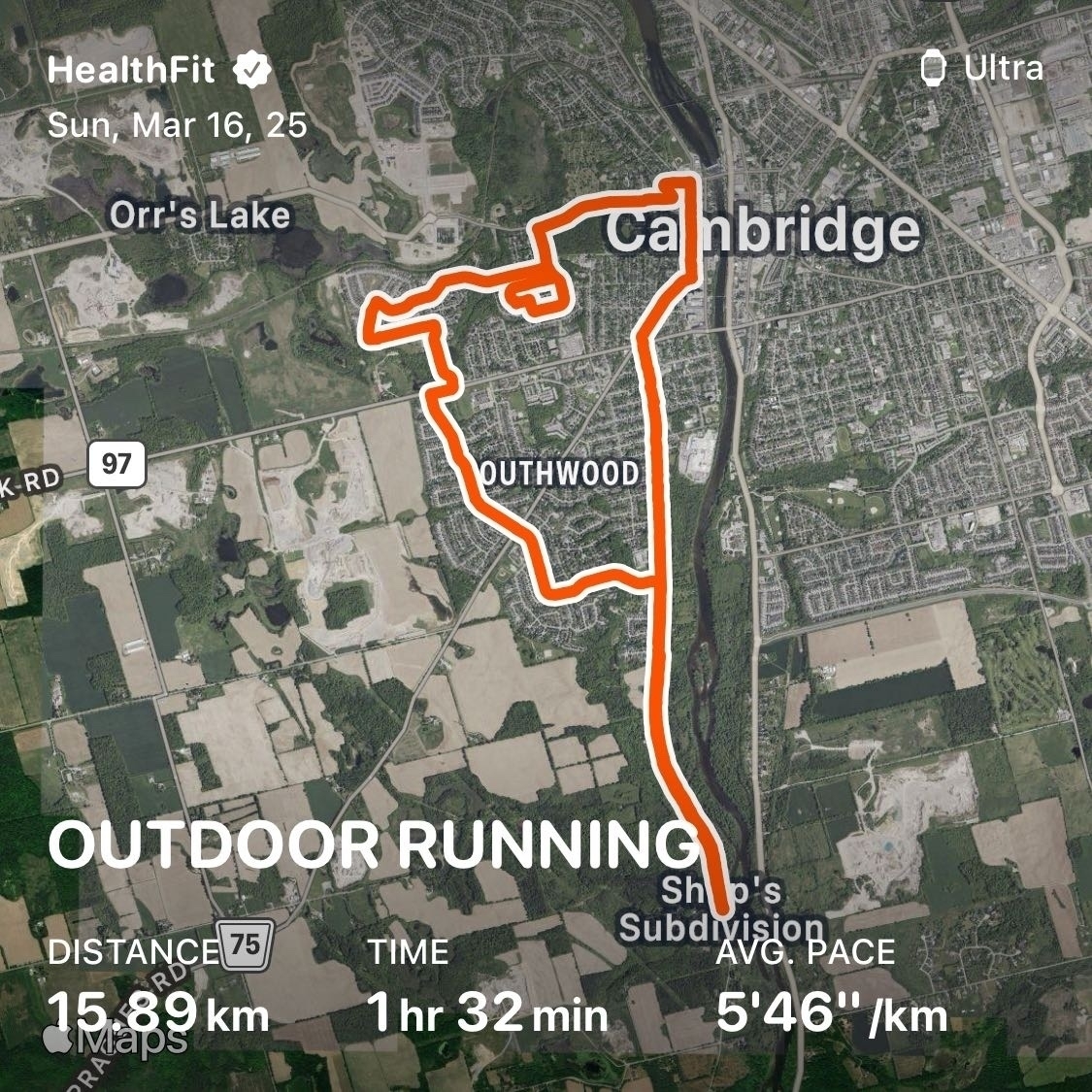🏃♂️ Although the novelty will wear off quickly, fun to have a proper winter run
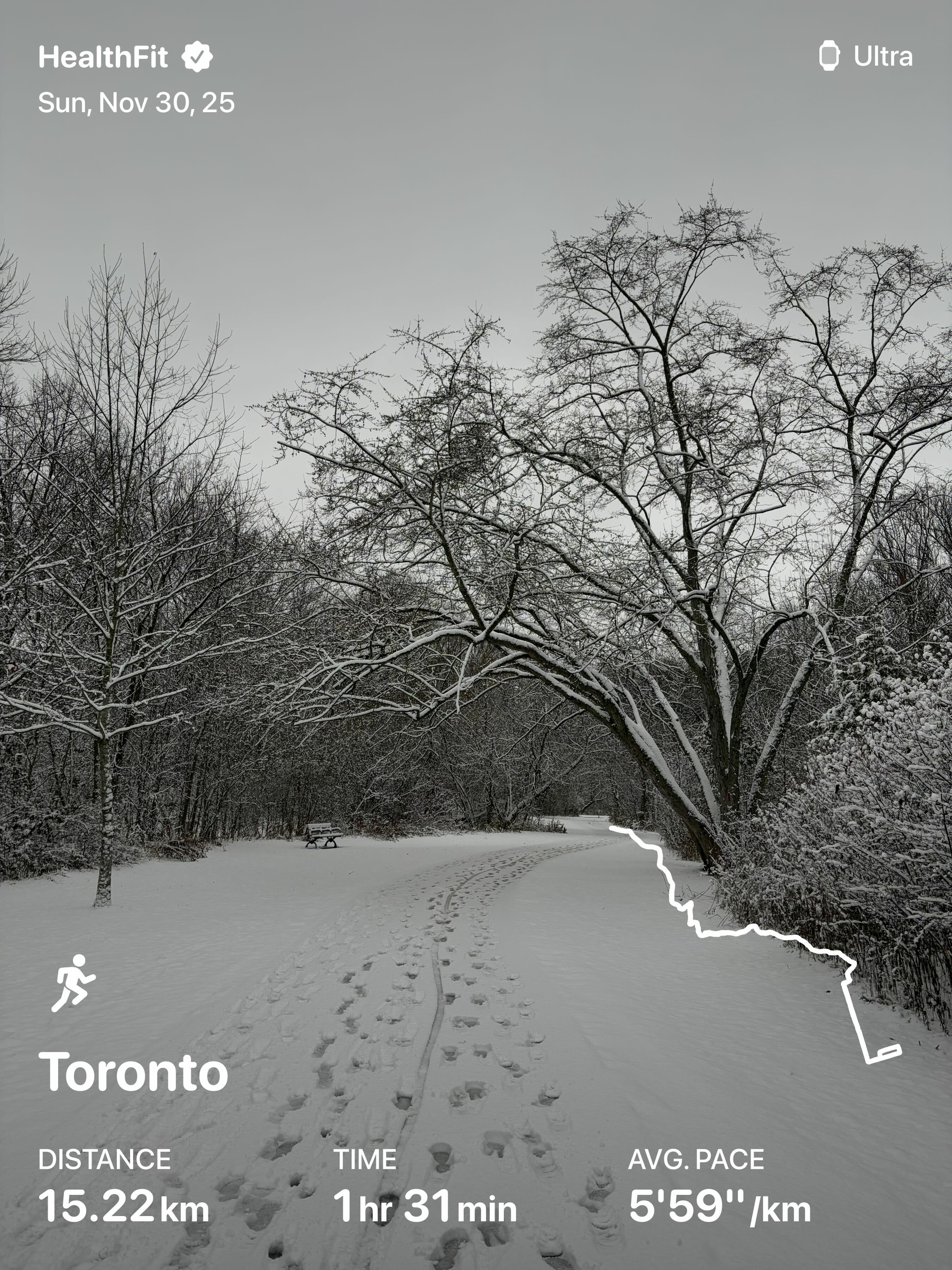
🏃♂️ Although the novelty will wear off quickly, fun to have a proper winter run

🏃♂️ I’ve been using the new Workout Buddy on my recent runs, including letting it select my music. Every kilometre, I receive updates on my pace and heart rate, along with contextual information like recent elevation gains or total distance. While I can easily see most of this on my watch, the regular updates are helpful, especially now that I’m wearing long sleeves and gloves.
The Workout Buddy’s voice is quite natural, encouraging without being annoying.
The music choices were all good, well-aligned with my tastes and suitable for running.
Overall, this is promising, except for the hallucinations. My watch kept announcing songs that it definitely wasn’t playing. These were good songs, mind you, just not what I was actually hearing. Furthermore, there was a perplexing inability to read the watch display. For example, it cheerfully congratulated me on having run for 50 minutes when the watch actually showed 73. Then, it got increasingly inaccurate, repeatedly congratulating me for a 50-minute run over the next 15 minutes.
There’s potential here, but it needs to be more accurate. I’ll continue letting it pick music, but I’ll keep a skeptical ear out for its announcements.
🏃♂️ Just as I’m thinking through my next training plan, Göran Winblad offers wise advice about increasing running mileage.
🏃♂️ First snowy run of the season. I’d only just started wearing long pants last weekend!
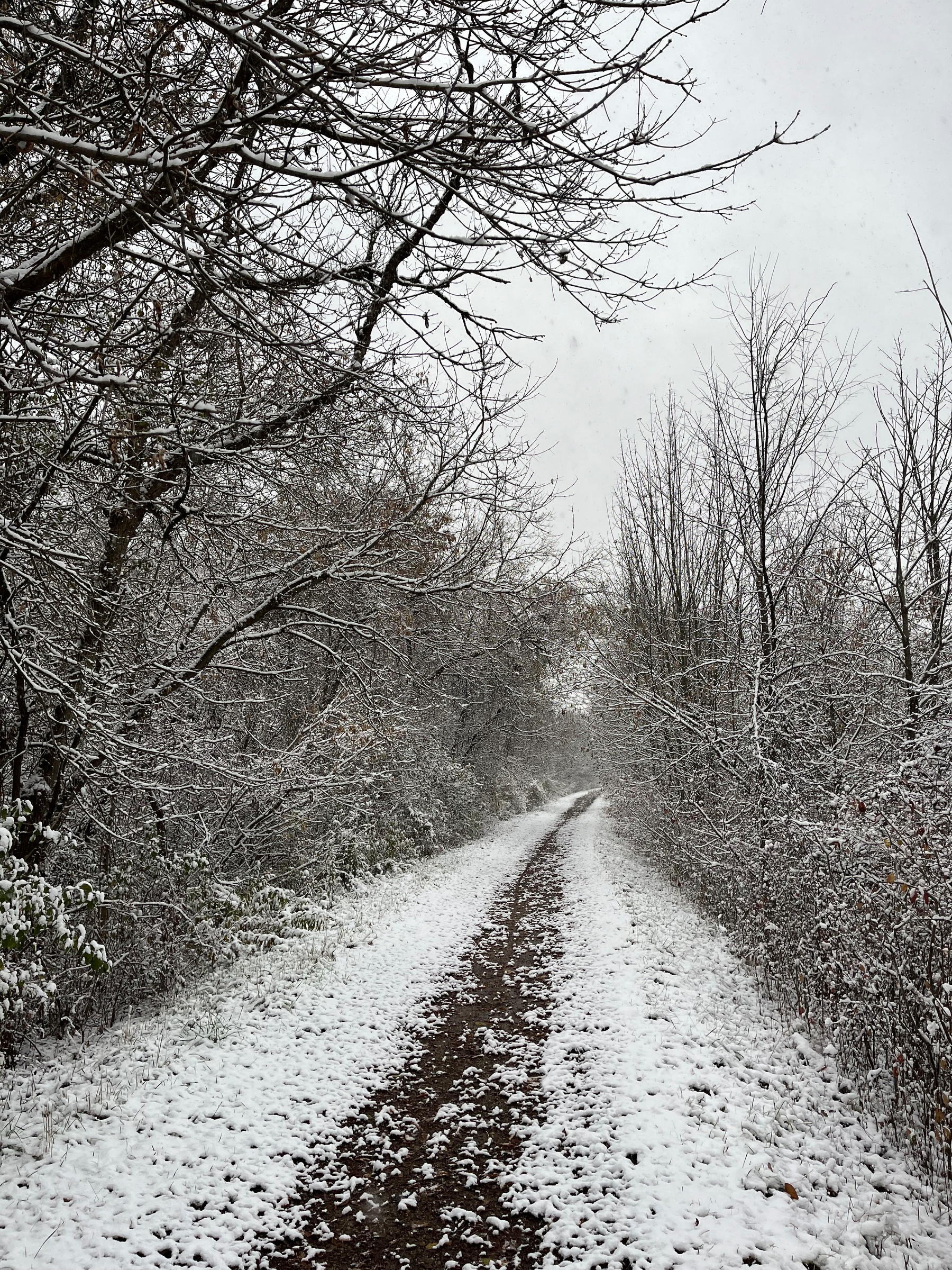
🏃♂️ Well, there’s a week that hasn’t gone to plan. Try again next week!
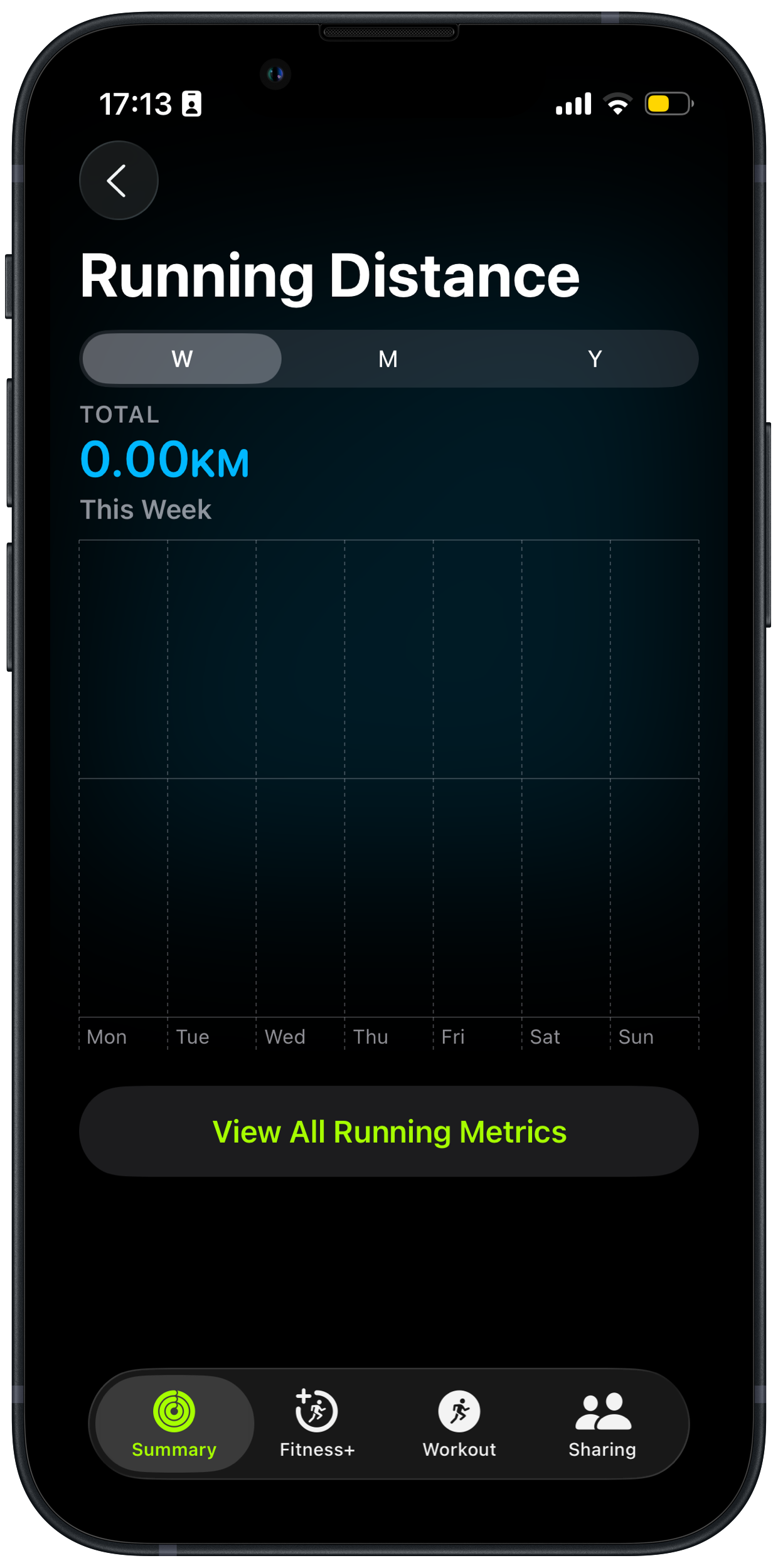
🏃♂️ I’ve done this route dozens of times, but always counter clockwise. This was the first time clockwise and it is interesting how different the route seems when going in the opposite direction.
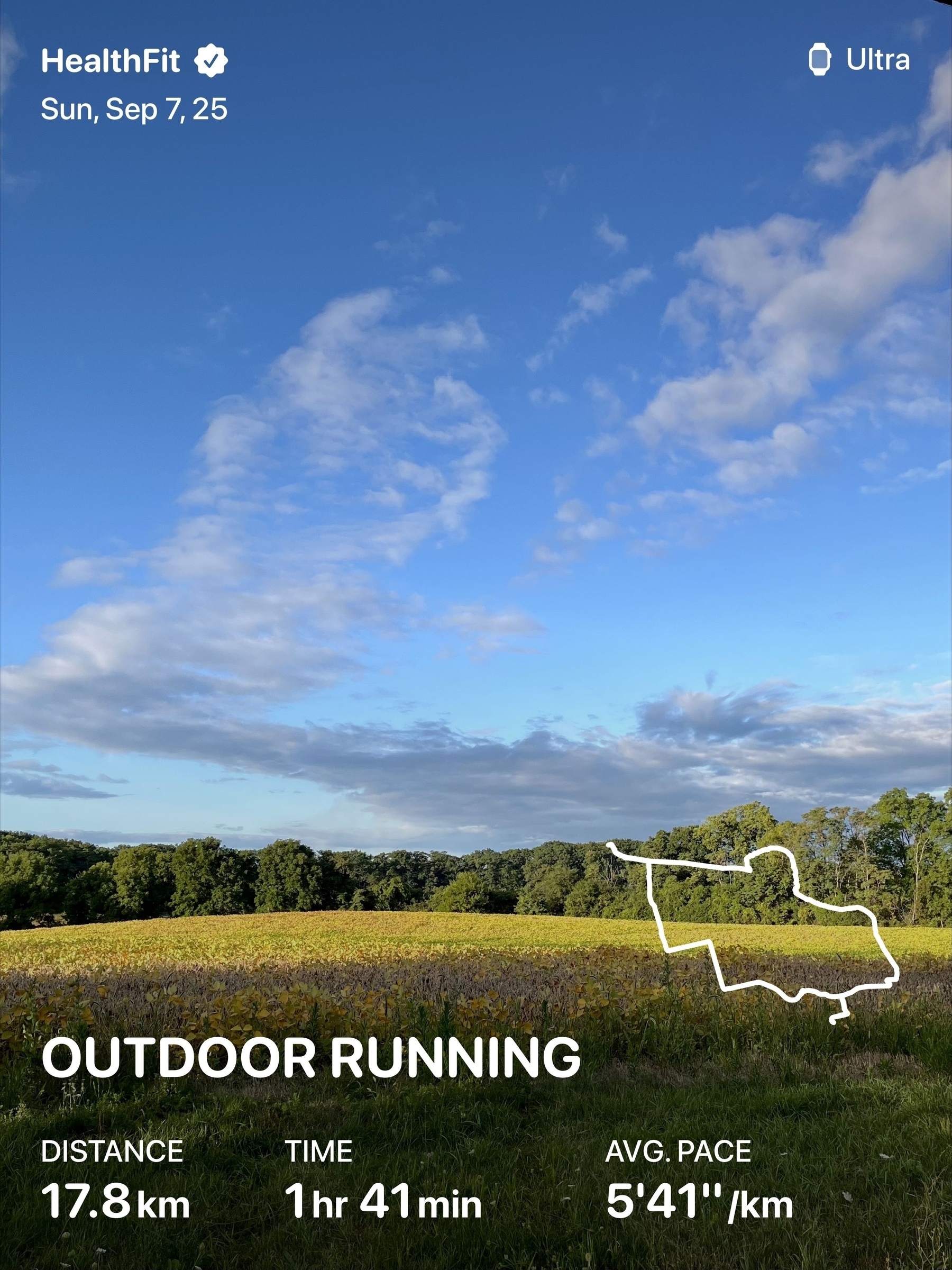
🏃♂️ I’d planned for a longer run, but allergies kept me up too long last night

🏃♂️ Clouds on today’s run, instead of smoke. Much better
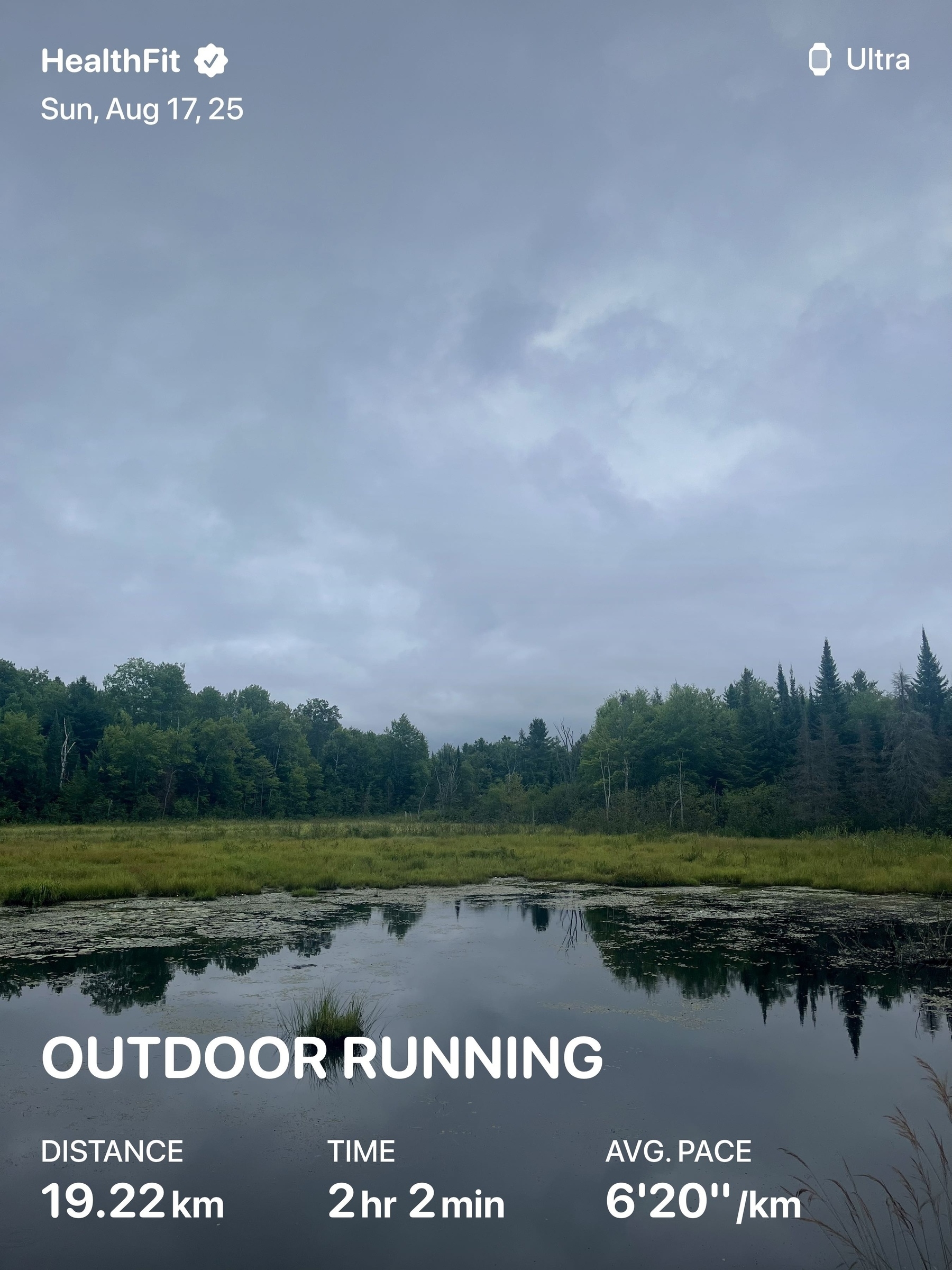
🏊♂️ The lake is the only cool place around here and I’m grateful for it

🏃♂️ A sobering war memorial on today’s run. Likely a large proportion of the young men in the area are inscribed on it
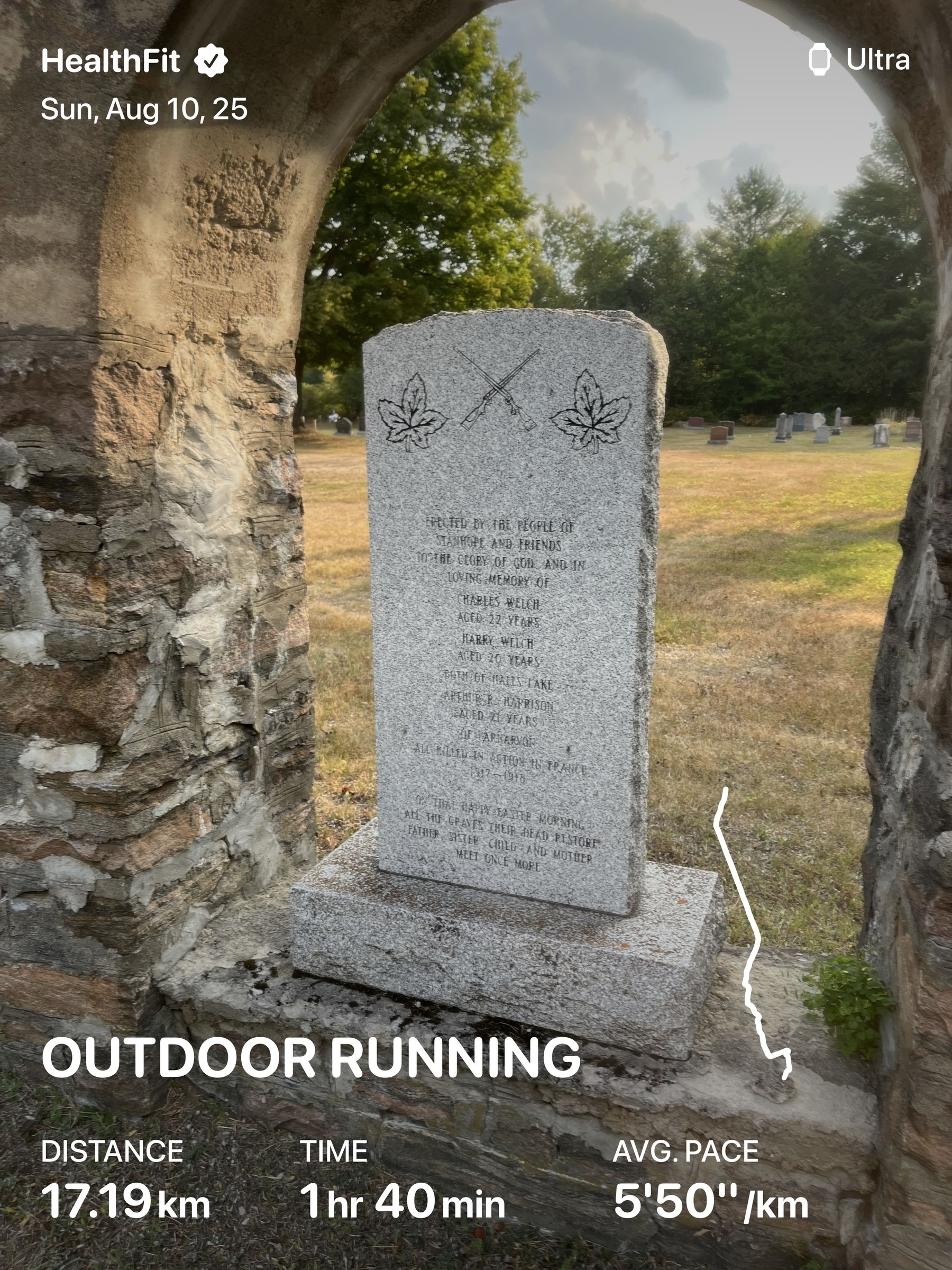
🏊♂️ Nice to be back in a lake

🏃♂️ Hazy out there from the forest fires on today’s run

After three weeks with a Readiness to Train score around two, I’m glad to be back in the green. Time to get active again!
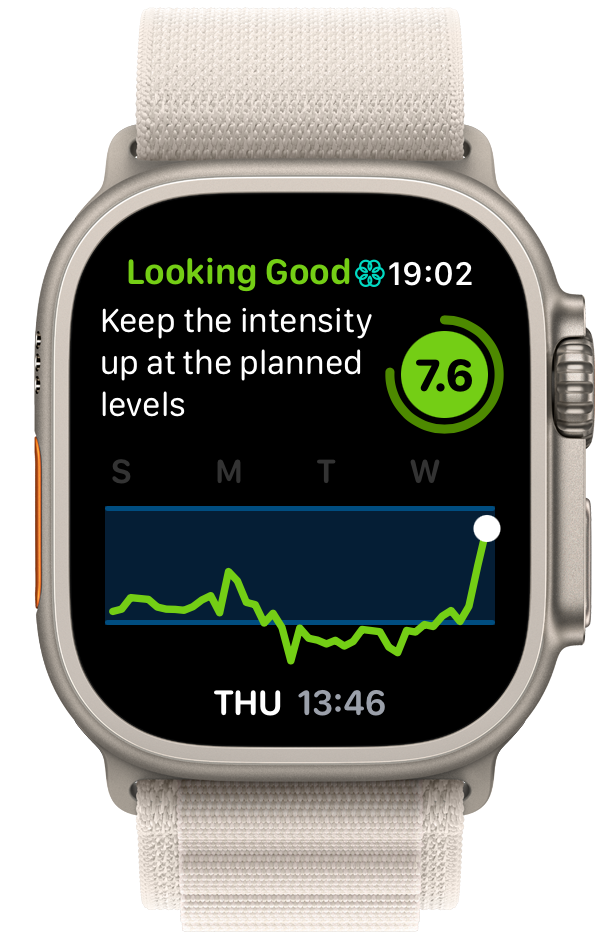
Tall Trees Muskoka. 📍
Reflecting on yesterday’s stomach troubles, I have to consider the deep fried butter tart I had the night before the race. A delicious concoction of a butter tart, wrapped in a cinnamon coated churro, topped with vanilla ice cream. Not traditional triathlon nutrition, but I’ve decided it prevented anything worse from happening, rather than contributing to the trouble.

🏊♂️🚴🏃♂️ I do these things because they’re hard. This was was the hardest yet: ridiculous humidity and some bad nausea on the bike made this one a struggle. 45 minutes slower than my last two attempts and every minute was earned. But, this is likely the one I’ll remember most.
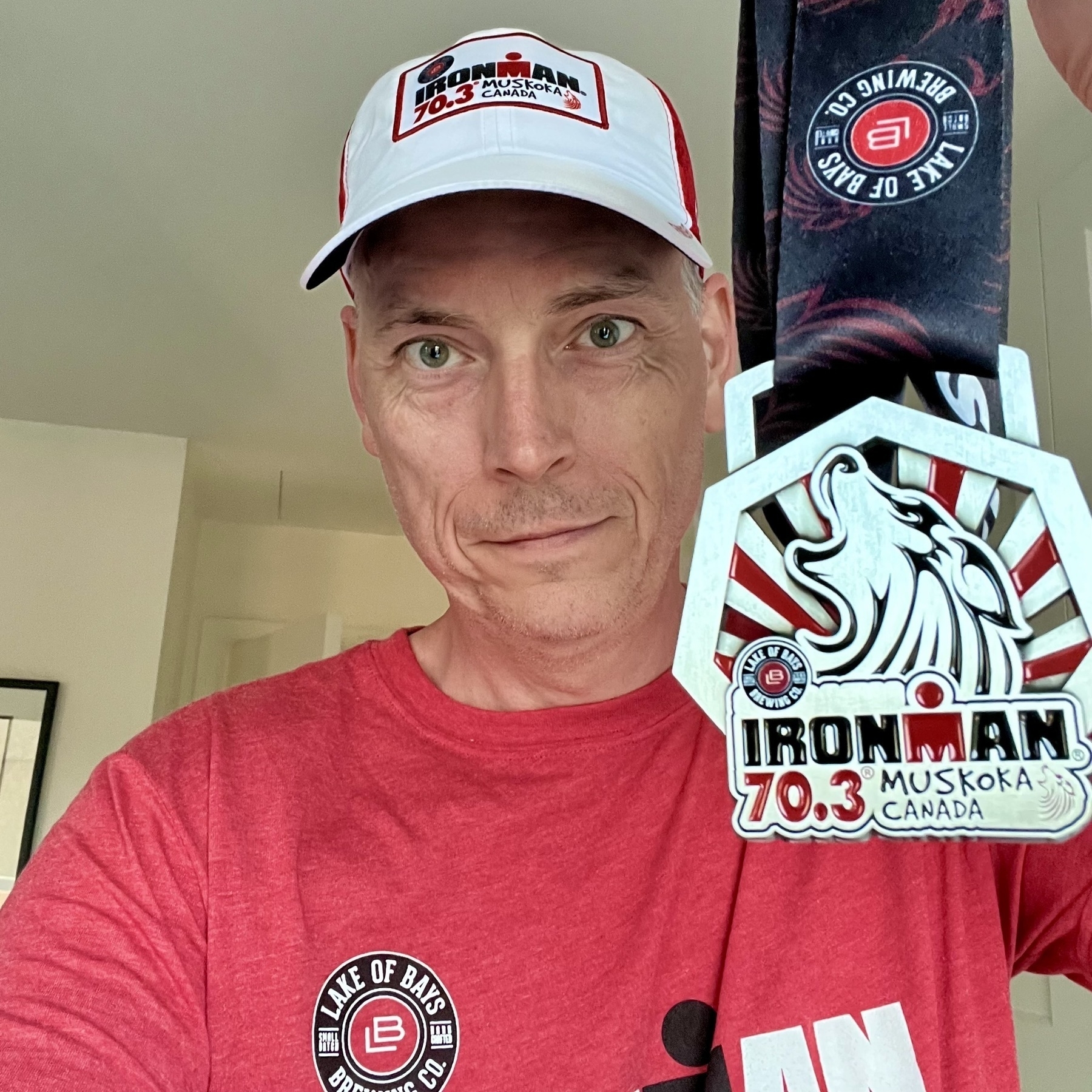
Family Place Restaurant. 📍
Race fuel

🏊♂️🚴🏃♂️ I’m always worried that I’m forgetting something. Pictures like these help, plus a packing list in Apple Notes
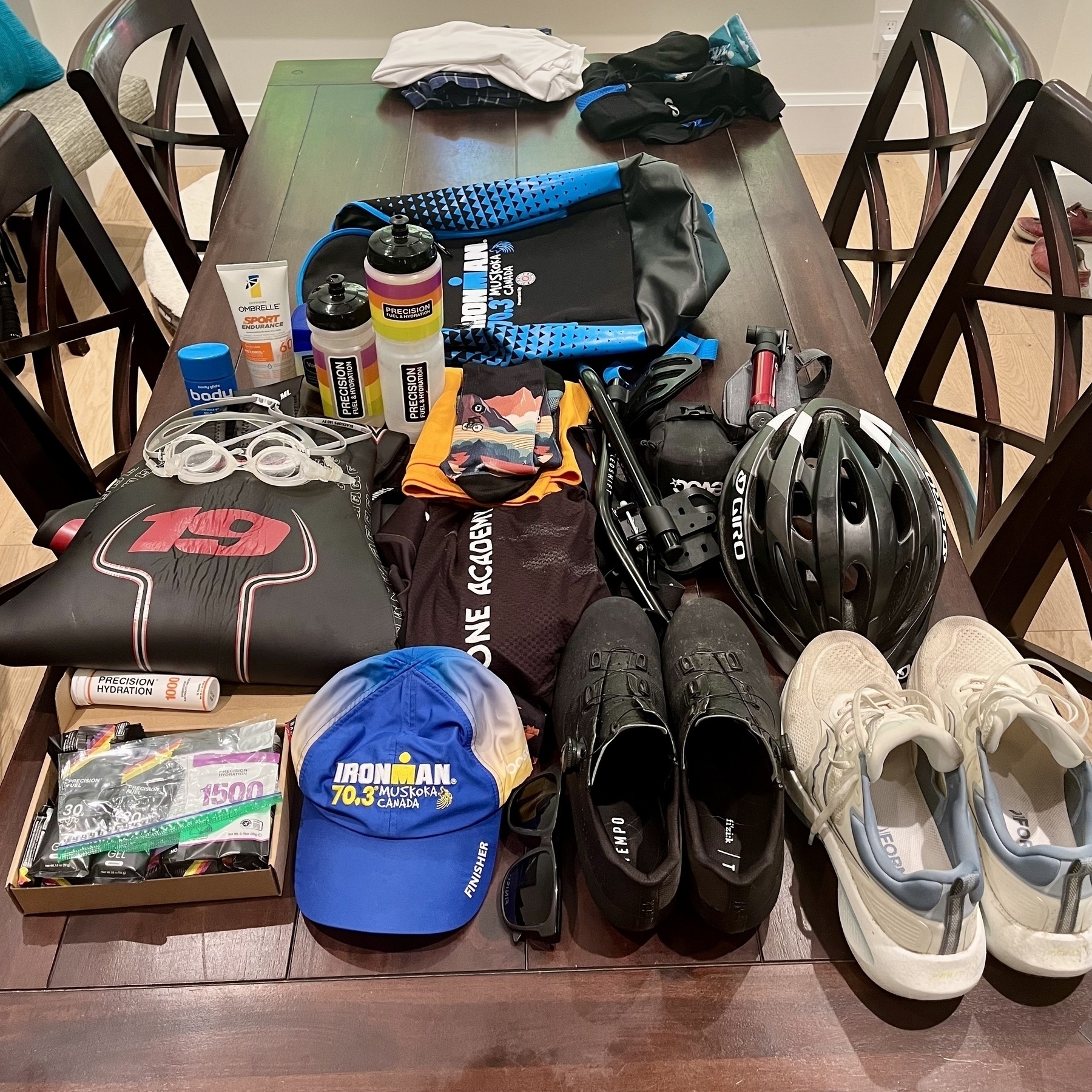
Sunday, June 1, 2025
Part of the appeal of triathlons for me is that you need to stay adaptive and resilient, always adjusting to race conditions and feedback from your body.
Today was a good example. Cold weather and intense winds led to the swim being cancelled. So, the triathlon became a duathlon. Although I missed the swim, it was the right call. Still, it takes a moment to recalibrate to starting with a run, adjusting your transition strategy, and sorting out a pace target.
The winds made the ride rather harrowing, lots of gusts, plus a headwind for the big escarpment climb 🥵. Then on a steep descent, we got buffeted around while peaking at 70 km/hr. After one particularly strong gust, a rider behind me shouted out some profanity that was totally warranted.
At least the second run was mostly well sheltered and I could push the pace a bit.
Overall, still lots of fun though. This is my fourth time racing this event and they’ve all been well done.

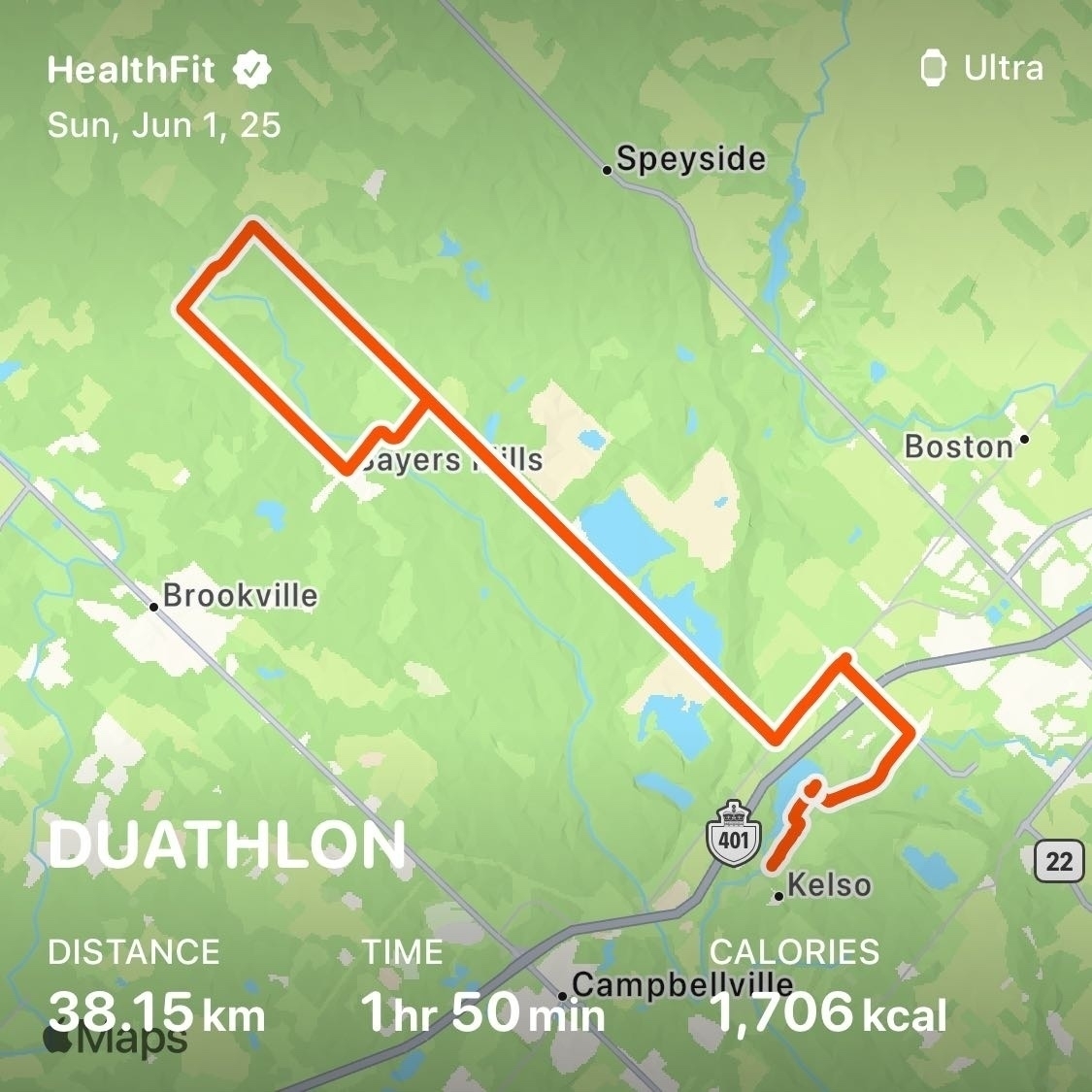

🏊♂️🚴🏃♂️ First race of the season tomorrow!
I actually enjoy this part — the setup. Laying out all the gear, checking the list, thinking through the transitions. There’s a quiet focus to it. A bit of nervous energy, sure, but also a sense of calm from knowing I’ve put in the work.
Getting everything ready is more than just packing — it’s part of the ritual. It helps me visualize the day ahead and ease into race mode. Time to trust the training and enjoy the race.
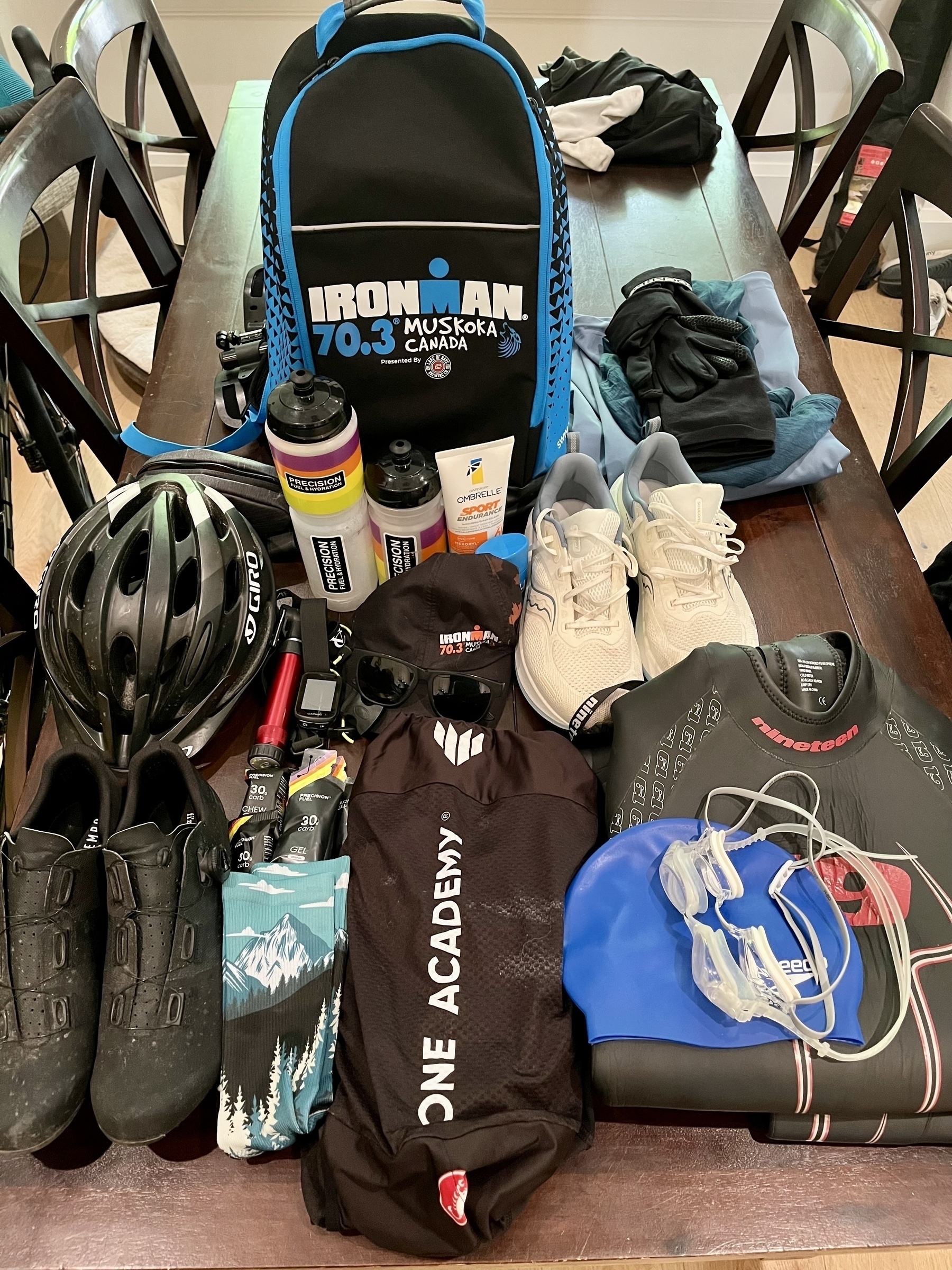
🏃♂️ Nice break after several days of rain for today’s long run
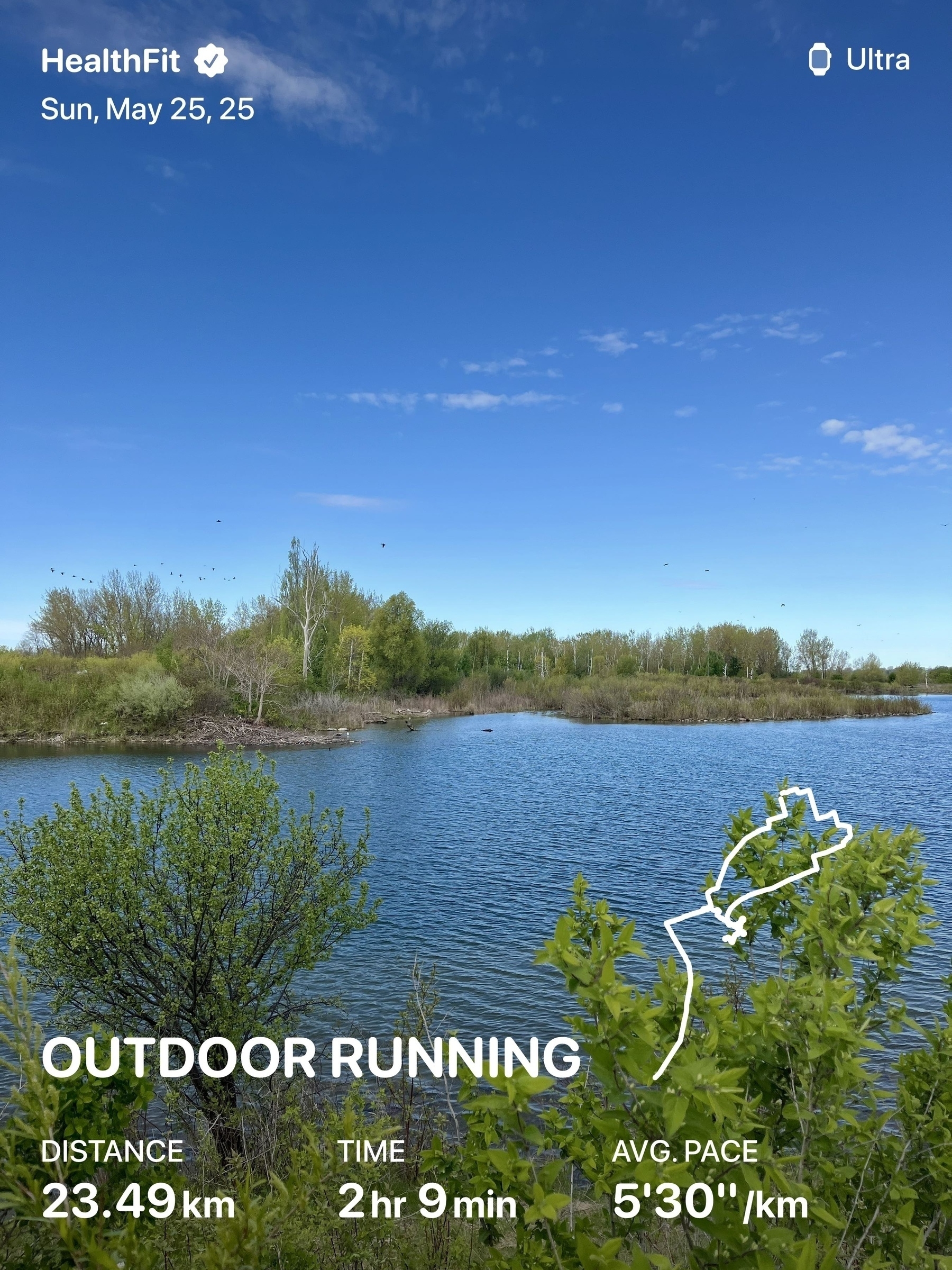
A new feature in HealthFit shows that I’ve been pushing the training too hard. A better balance would be 80% in low aerobic. Although I feel okay, I’ll fit in more recovery runs and rides
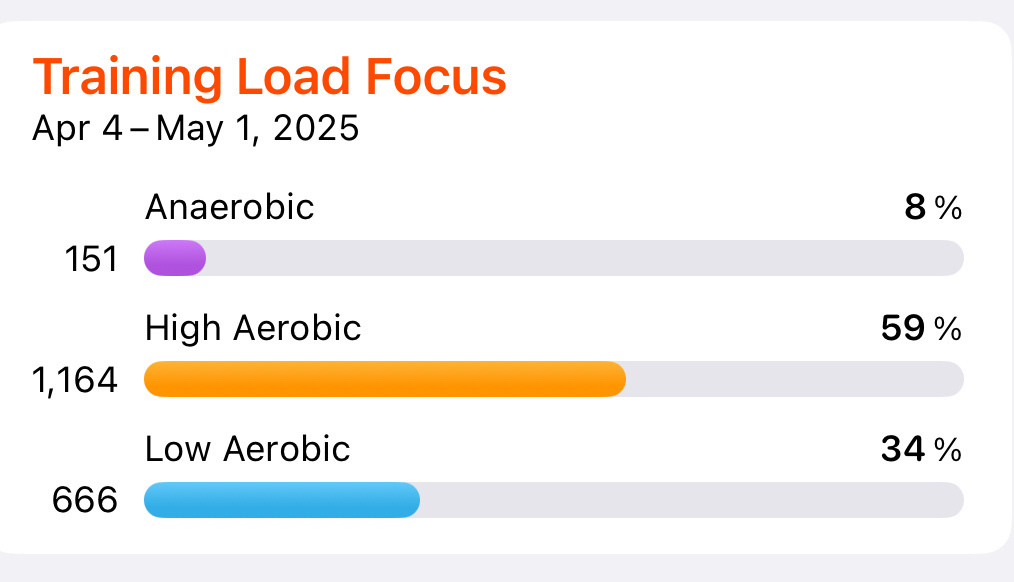
🏃♂️ Recovery run

Monarch Park. 📍
🏃♂️ Track Tuesday: 3x 1 mile + 3x 800m
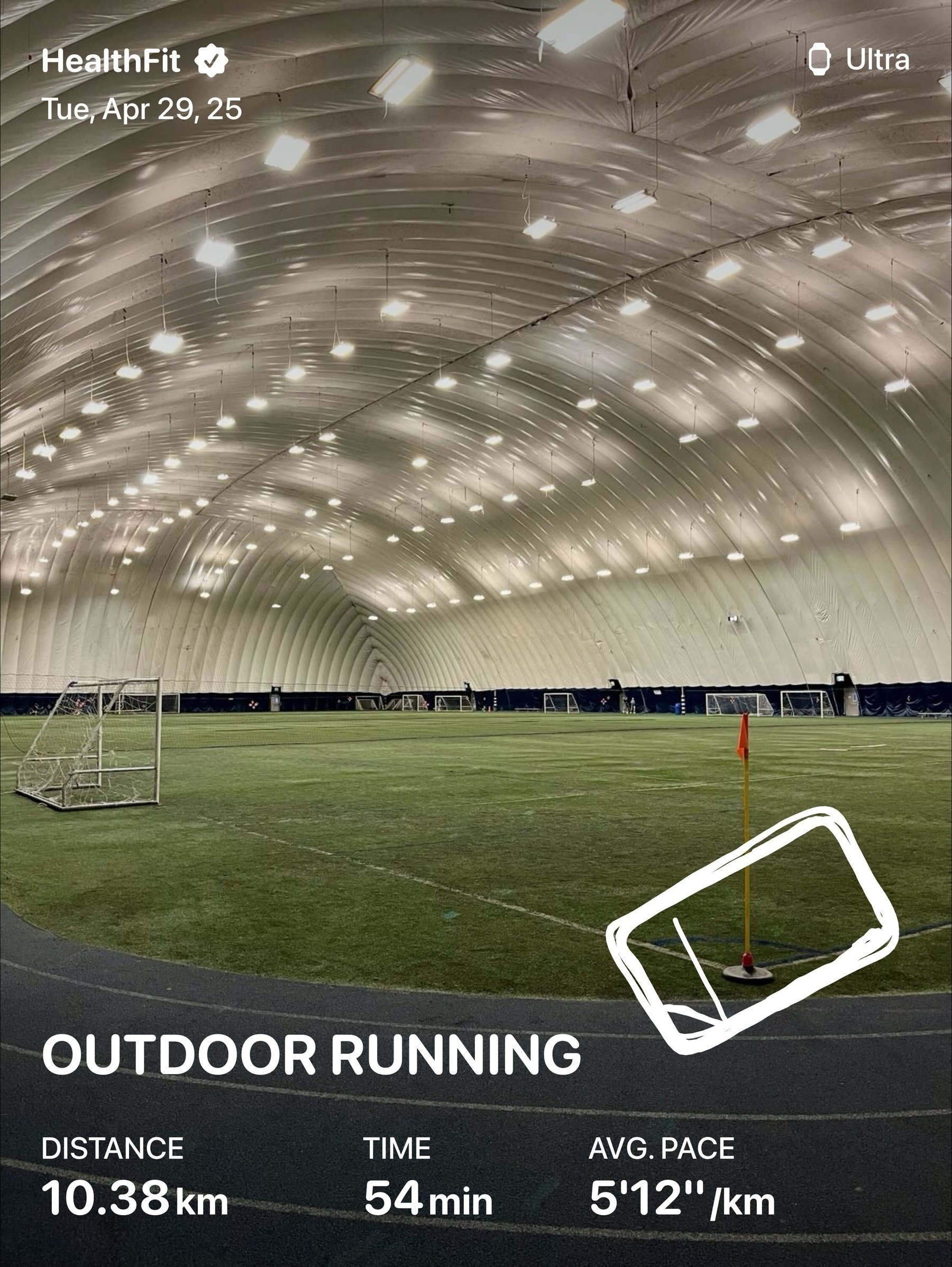
Riverdale Collegiate Institute. 📍
🏊♂️ Mixed intervals
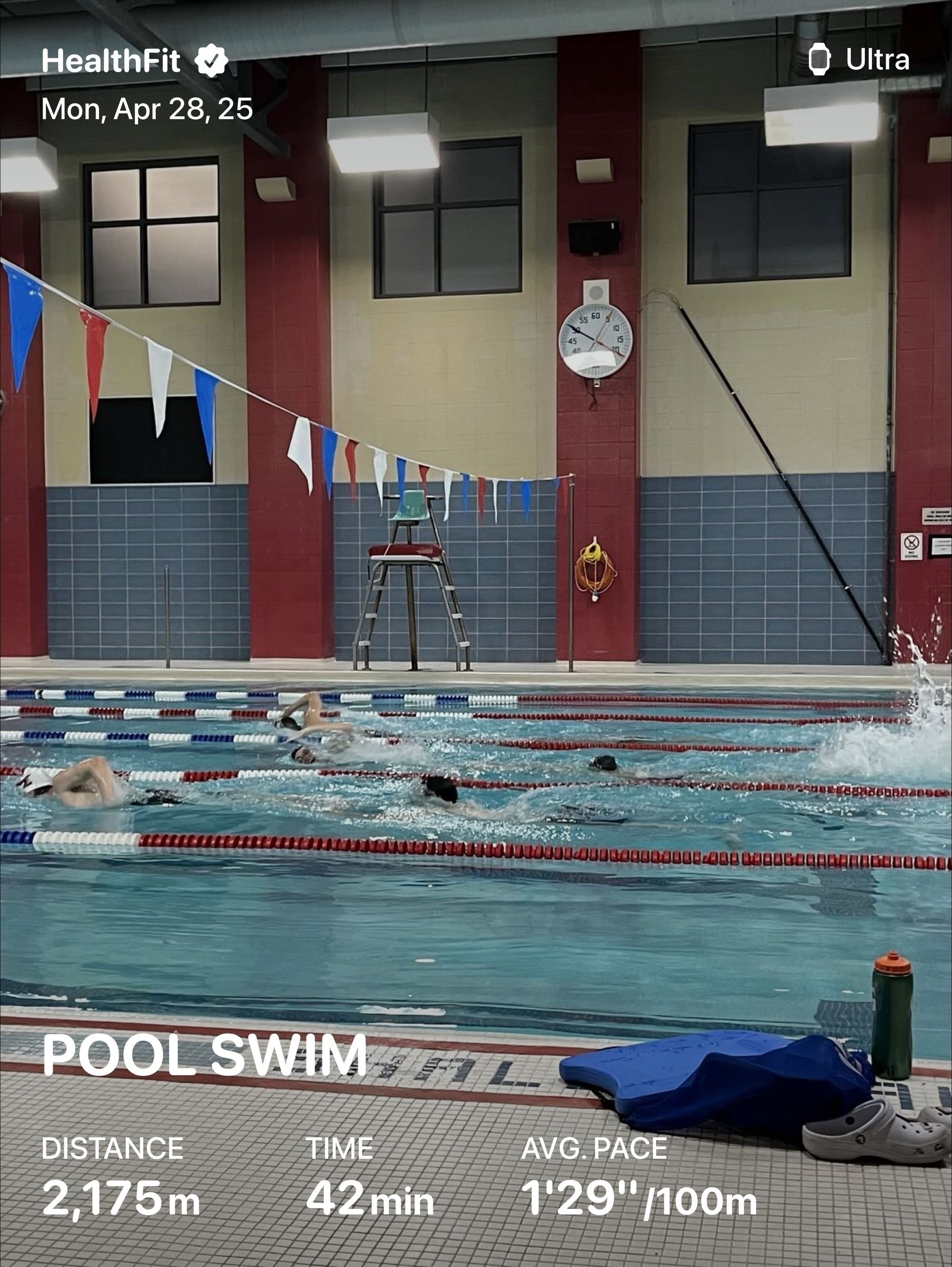
🏃♂️ Much better weather today than yesterday for a run
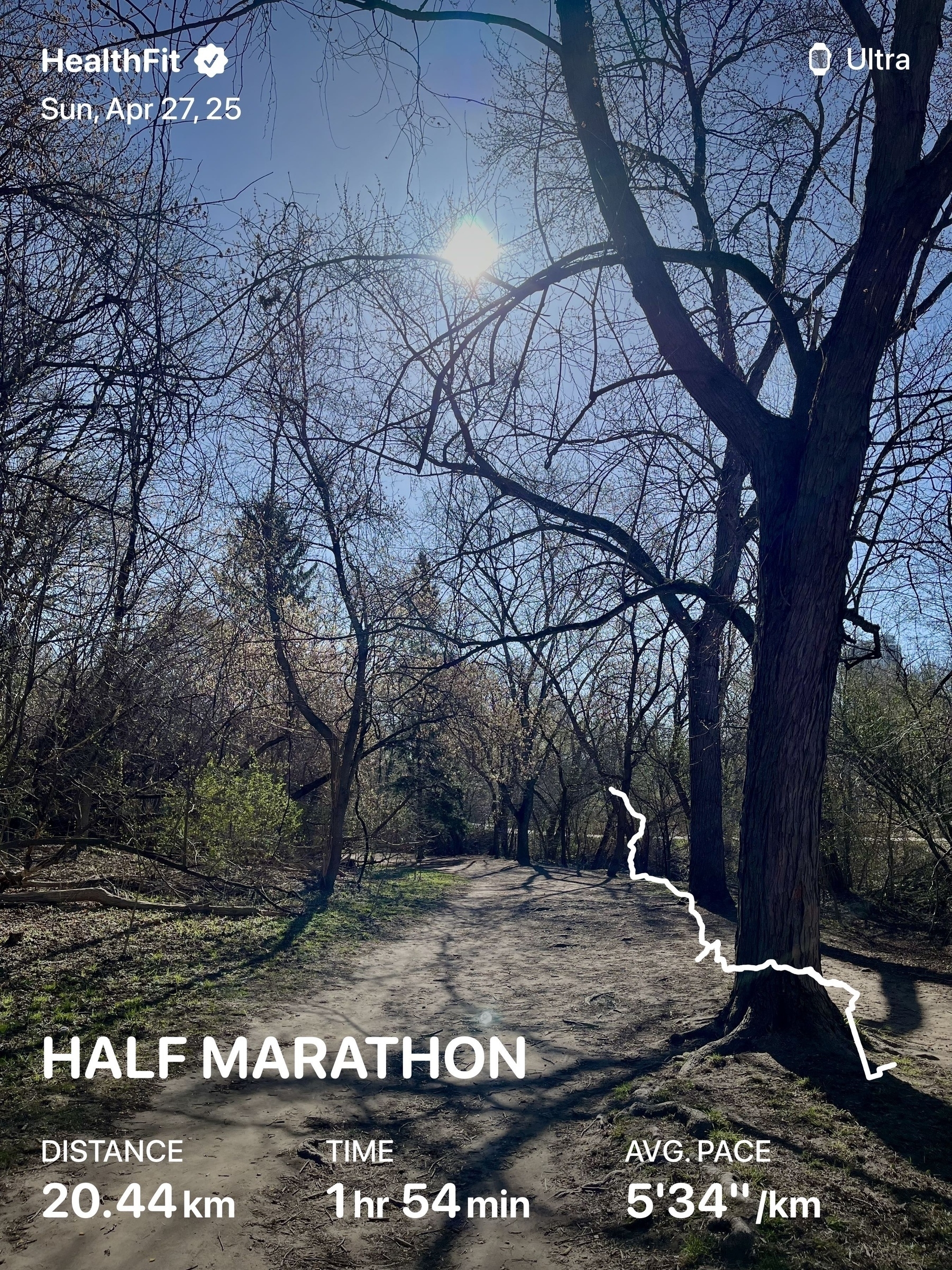
🏃♂️ I don’t have a bike at the in-law’s. So out for another run
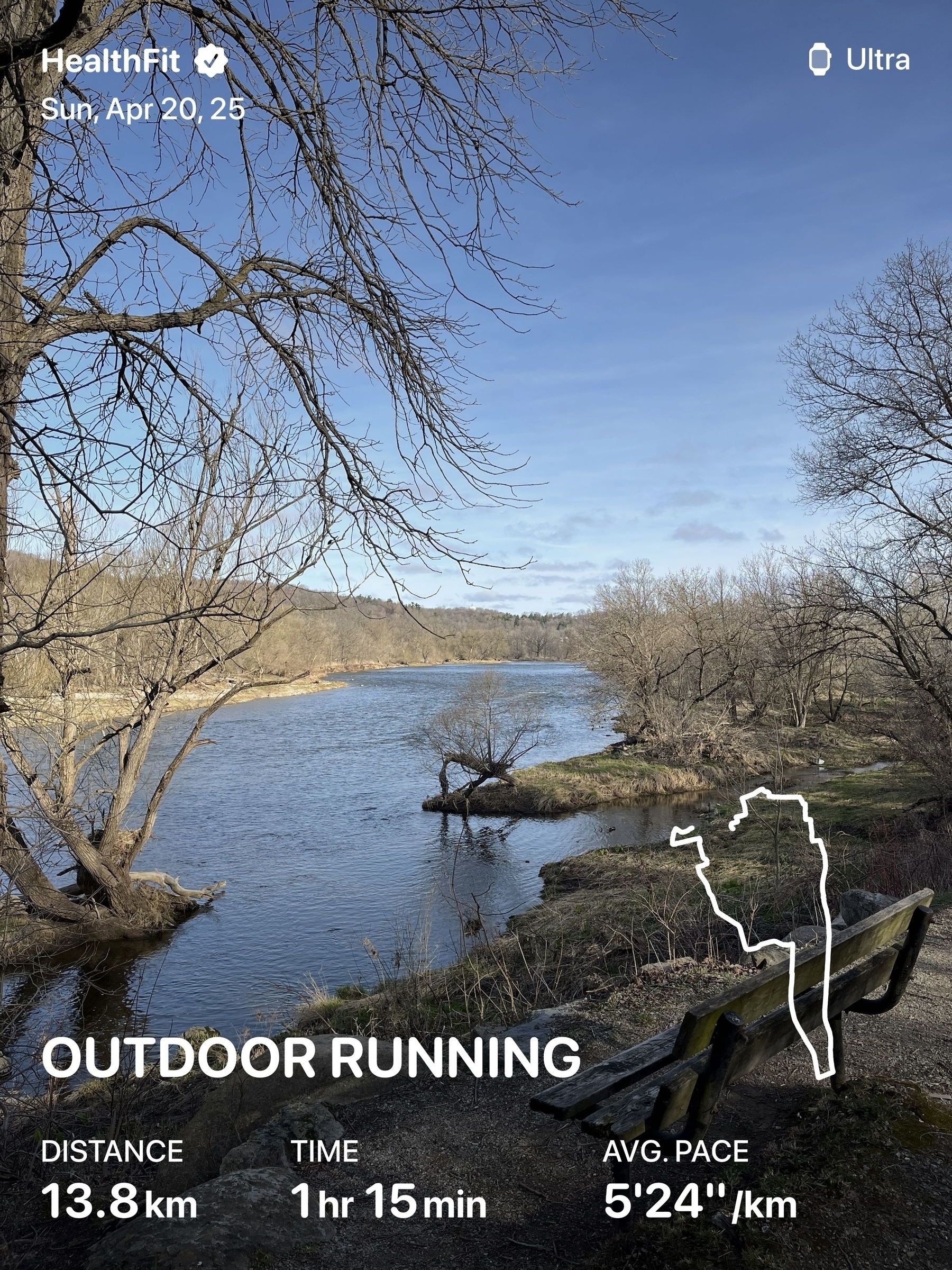
🏃♂️ Pool is closed today, so swapped in a long run
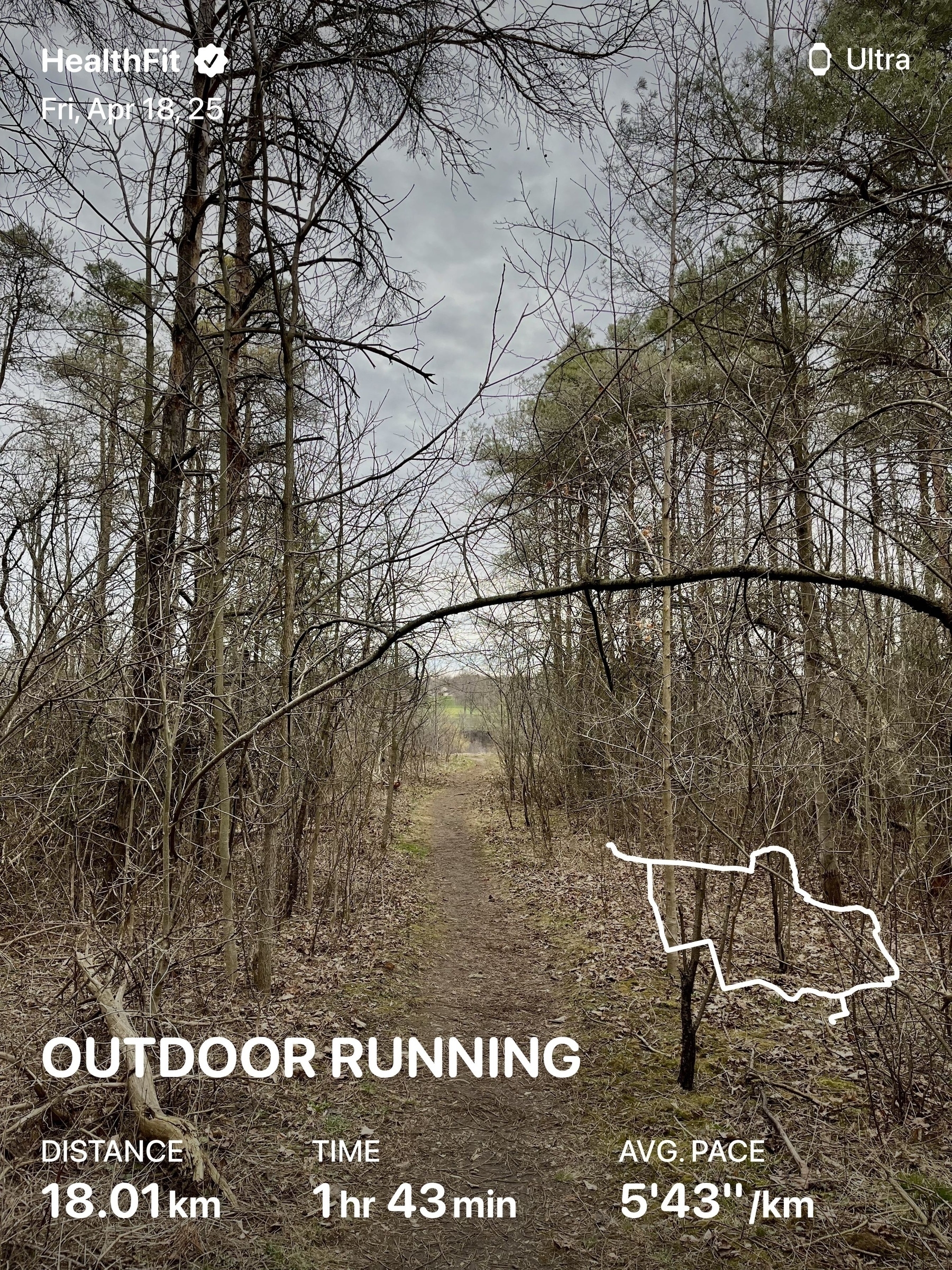
Riverdale Collegiate Institute. 📍
🏊♂️ Night swim

🏃♂️ Tried a new route on today’s run
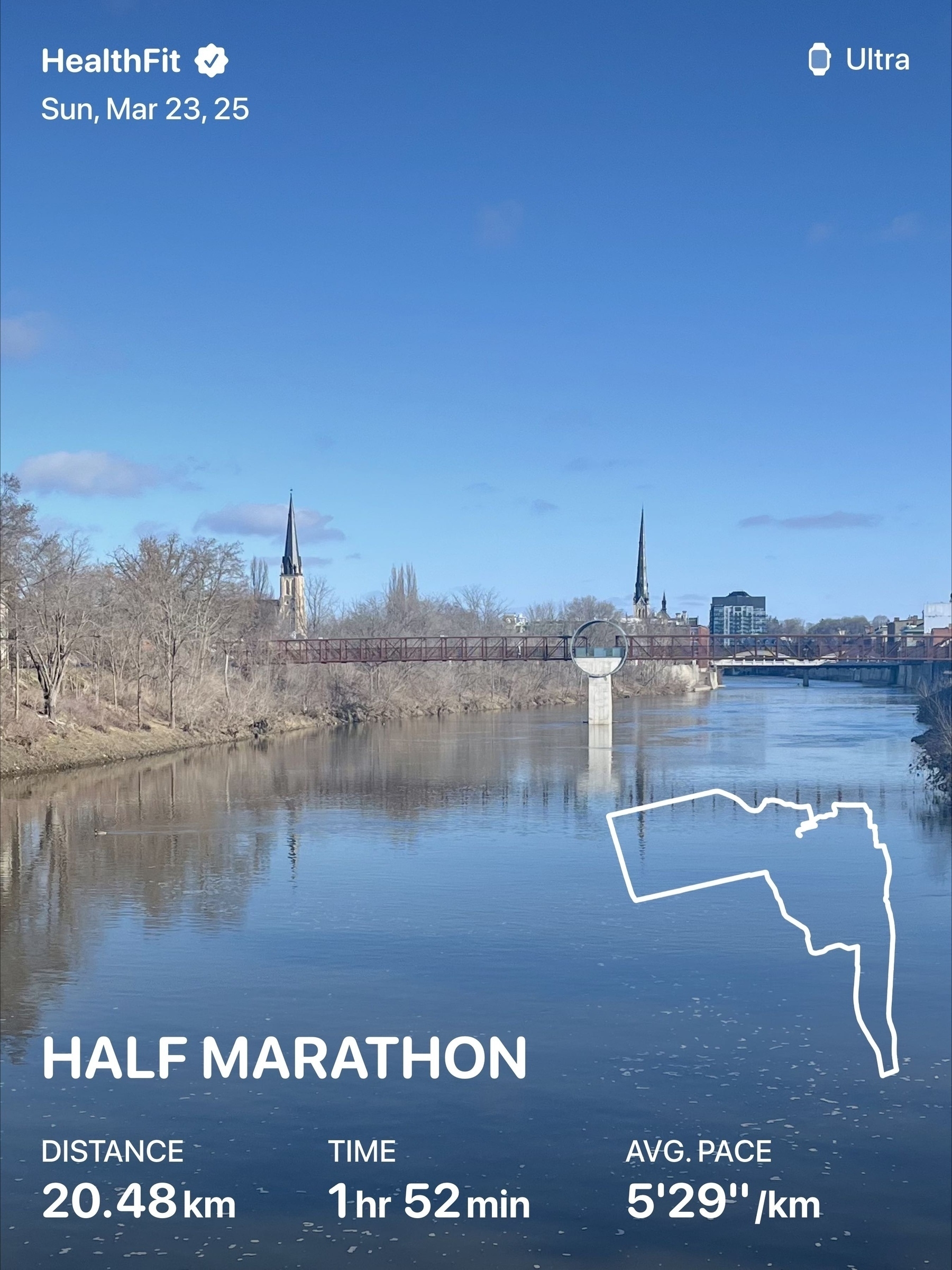
🏃♂️ 👍 to shorts 👎 to wind and rain on today’s run
